Editor’s Note: This sailing article was originally published in Overland Journal’s Summer 2023 Issue. Lead photo by Bryan Danger.
Bumfuzzle | Pat, Ali, Ouest, and Lowe Schulte
Photography courtesy of Bumfuzzle
“Neither of us had ever sailed or had a boat. We were just Midwestern kids from Minnesota,” Pat Schulte says of the moment he and his wife, Ali, decided to set sail across the Pacific. They met for a few beers one evening at Lou Malnati’s, their favorite pizza place in the Windy City. Pat worked at the Chicago Board of Trade; Ali was an administrative assistant at the Sears Tower. “We were young and had some money,” Pat says. “We thought, we should cut out of here and go do something crazy for a while.” After visiting a few blogs and websites, the decision was made—they would sail around the world.
Now, over 20 years later, the Schultes have transitioned from land to sea numerous times, becoming deeply familiar with the similarities and differences between overland travel and sailing. Pat, Ali, and their children, Ouest and Lowe, move between the two forms of transport in three or four-year cycles. Much of this is due to the constant stressors of continuous weather monitoring and maintaining a boat in the harsh maritime environment; plus, Pat finds the ease of overland travel refreshing. There is a different kind of freedom that comes with traveling by vehicle—with fewer weather challenges to contend with, it’s possible to chase the sun and move on a whim.

While long ocean passages, such as Pat and Ali’s 24-day Pacific crossing from Ecuador to the Marquesas Islands, instilled a sense of accomplishment, the process was often tedious, long, and boring. “It is only day three of the passage, and we are ready to go insane,” Pat wrote in May 2004. “The passage from Panama to the Galápagos has to be one of the worst. Once again, we are beating into big seas but not actually heading toward our intended landfall. It’s a passage like this that makes me think maybe driving around the world wouldn’t have been such a bad idea.” When they reached Italy, Pat and Ali felt lured to land, leaving their 35-foot catamaran for a month of backpacking. “It hit us that we had to do more land travel to see different things,” Pat says.
Following their round-the-world sail, Pat and Ali explored Mexico in a 1965 Porsche 356C and traveled the length of the Pan-American Highway in a 1958 VW bus. As “tends to happen in hippie buses,” Pat says, the first of the Schulte children was conceived—a daughter named Ouest. Their son, Lowe, another sailboat, a 1966 Dodge Travco motorhome, a 1966 Airstream, and a 1986 Grand Banks trawler followed. Currently living aboard a 2015 Nautitech 40-foot catamaran, and with a spinnaker in-flight, this American family of four is ready to set sail once more.
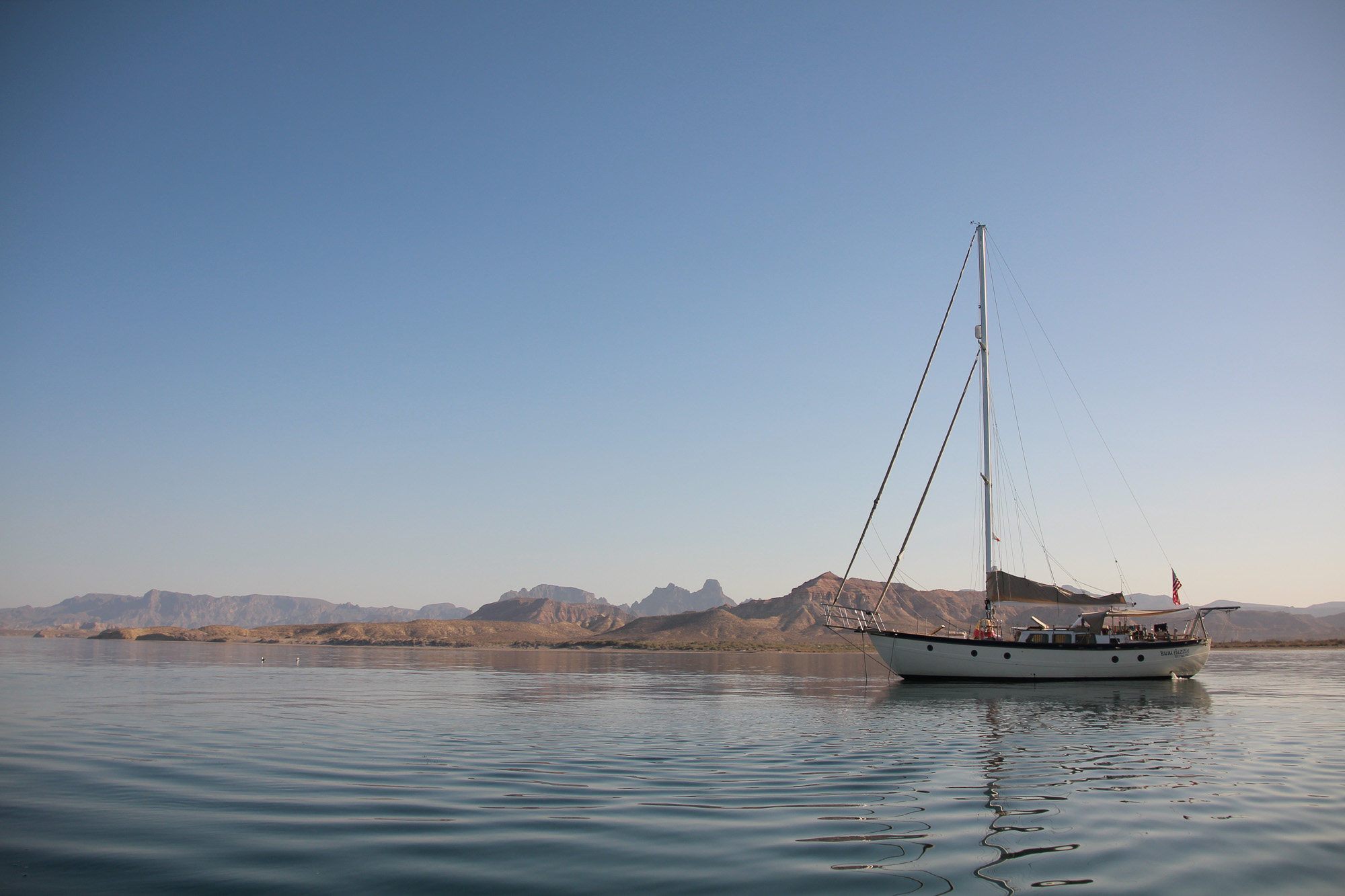



There is something to be said for living aboard what Pat calls a “floating condo” with plenty of amenities, including 800 watts of solar, two fridges, ample living space, and a water maker that desalinates 35 gallons of water per hour. This lifestyle is a definite departure from Pat and Ali’s days living out of the VW bus. “All we had was a little fridge that held a case of beer, and that was about it,” Pat says, adding that he and Ali usually ate locally and on the go. Sailors typically load up on grocery staples at the beginning of the cruising season, spending a couple of thousand dollars and supplementing with fresh items when available. With more comfort, however, comes more work and additional risk. “There’s always that stress in the back of your mind that different things can go wrong,” Pat says. “It’s one thing to have your vehicle’s engine break down, but to have that happen at sea would be a major issue.”
During their time in Aruba, Bonaire, and Curaçao (collectively known as the Leeward Antilles or ABC islands), the Schultes’ weekdays consisted of work (Pat started his own trading group a few years ago), school for the kids, and sessions of greasy engine work and boat maintenance. Weekends involved stocking up on groceries, diving, windsurfing, and exploring. Seemingly simple tasks such as laundry can turn into a day-long adventure requiring lugging a load of clothing on a dinghy ride and walking dusty roads to find a local laundromat.

But Pat admits that much of what he enjoys about living on a boat is spending time on and in the water. “Something we talk about quite often is how the kids are always outdoors and how nice that is.” Beneath the Caribbean surf, they return to a world filled with deep valleys and protected coral reefs, home to seahorses, lionfish, and green moray eels. “It was awesome to watch [Ouest and Lowe] underwater, perfectly comfortable and at ease, communicating easily via hand signals,” Pat recalls from an open water diving course they completed in St. Croix in 2020. “I’m super proud of them. Watching how at home they are underwater, at their age, is a gift.”
Circuitous Project | Andrea Whitaker and Scott Klein
Photography courtesy of Circuitous Project
Scott Klein and Andrea Whitaker were cruising through blue Haitian waters when their sailboat rigging popped due to a backed-out pin. Scott was at the helm, forced to tap the pin with a hammer while simultaneously steering and reading Andrea’s hand signals from the bow 30 feet away. The couple quickly lowered the sail to remove the load on the rigging, potentially preventing the mast from falling or, at worst, the boat from tipping over. Andrea still remembers that moment. “There’s that pucker moment where you’re like, we have to make it to the anchorage before anything happens. At least with overlanding, you can pull over,” she laughs. For Scott, the thrill at the end of a sailing journey is incredibly rewarding. “Once you’re out there, it’s just the two of you. You’re relying on your significant other or partner 100 percent. It’s a lot more intense.”
Born and raised in Cocoa Beach, Florida, Klein has been around boats all his life. He completed an ASA 101 course (Basic Keelboat Sailing Certification), bought a 40-foot sailboat, and never looked back. After seven years practicing combat medicine in the U.S. Navy, Scott met marine biologist and underwater photographer Andrea in West Palm Beach, where she was working as a deckhand and guide on a local dive charter. “We started dating, and then he asked me to move onto the boat,” she says. “We went sailing, doing a lot of local stuff here, then to the Bahamas, down to Haiti, and back.”
South Florida sailing is a culmination of everything Andrea and Scott love: the slow pace is relaxing, tangerine-hued sunsets add to the romance, and the ethereal sea life is both mysterious and remarkable. But the marina industry in Florida is changing, prohibiting liveaboards, experiencing an influx of older, wealthier clientele, and rates of in-demand boat storage have skyrocketed. So, Andrea and Scott sold the 38 Island Packet sailboat, packed up Scott’s Jeep Gladiator, and hit the road.
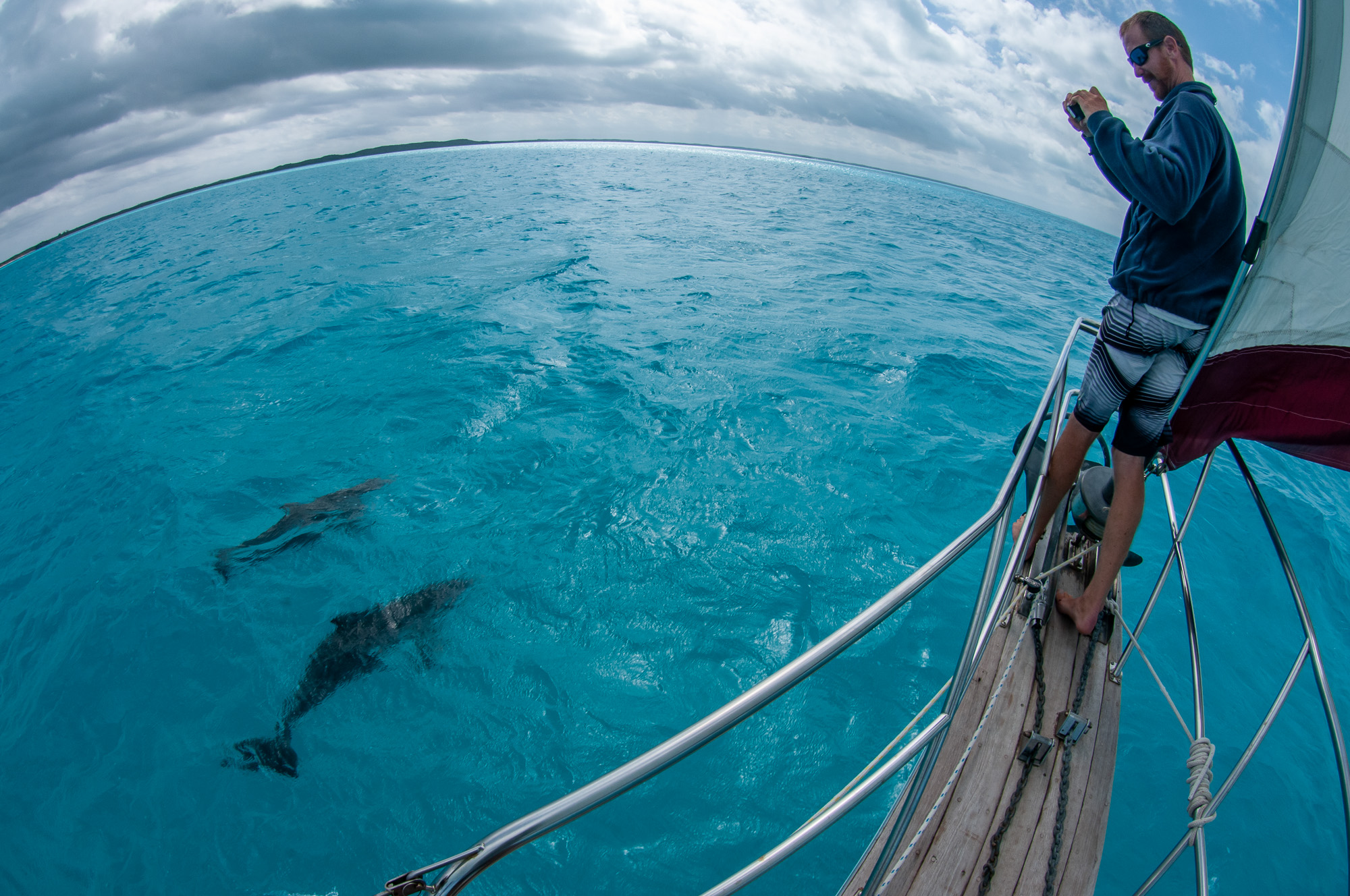

Last summer, Scott and Andrea drove from South Florida to Deadhorse, Alaska, and up the Dempster Highway to the frigid Arctic waters of Tuktoyaktuk, Canada. Accustomed to carrying enough boat parts to undertake a complete engine overhaul, a rewire of the electrical system, and space for up to four spares of certain items, a mechanically inclined Klein found it challenging to leave extra tools behind. “It’s more difficult going from sailing to overlanding in the paring down process,” he says. Corrosive salt-infused air and water necessitate a collection of extra parts to replace rusting, degraded ones. As for electronics, Scott prefers simple, proven systems. “On a boat, you need to be able to remedy everything,” he explains. “I carried a lot of that stuff over [to the Jeep] from sailing. I like simple switches and fuses because if something goes wrong, you can bypass or remedy situations that way.”
Straightforward systems become imperative during night sailing stints, especially while tracking storms. When it’s only the two of them on board, night watch sessions alternate every three to four hours. “But at any point,” Scott notes, “you have to be able to get up and trim the sails if a storm comes in or lend a hand when needed.” Tracking storms at night can be tricky, especially with ample cloud cover. Scott says the ability to read the weather is much more important while sailing. “If you get caught with the sails in the wrong formation, you can tear them apart or knock the boat over.” Although, he jokes, there is one similarity: “No matter which way you go, the direction you want to go is always into the wind.”
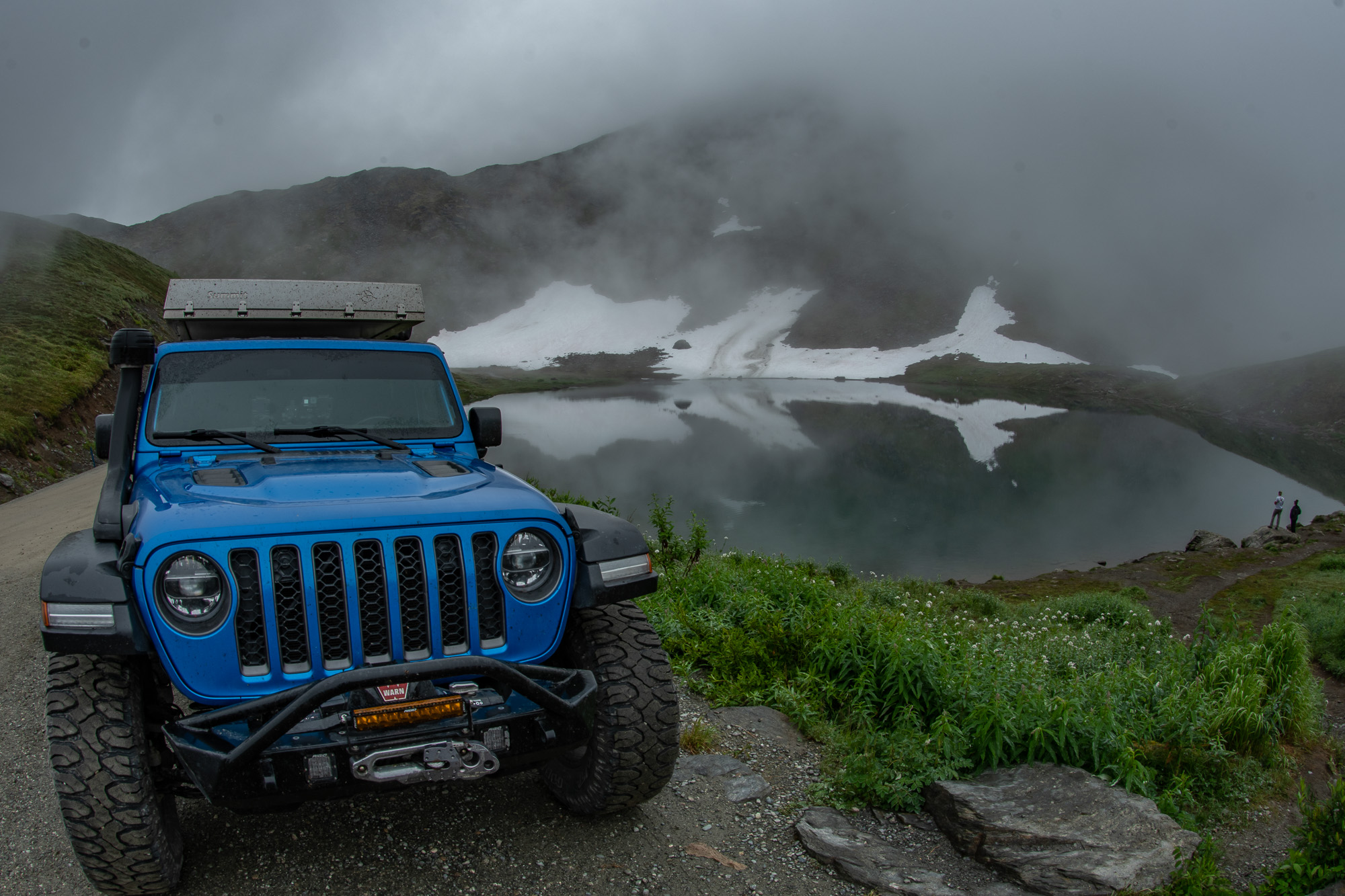
Whitaker says preparing for extreme weather encountered during sailing trips made her feel overly prepared for overlanding. “We have a lot of foul-weather gear. We’re ready for snow and rain. This is just what we did on the sailboat, knowing it could rain at any time.” Both feel comfortable camping, as Scott has always been road-tripping out of a Jeep of some sort (he has owned nine), while Andrea grew up camping in Iowa and spent a year living out of her Dodge Caravan with her dog, a mattress crammed in the back.
Scott says the transition from sailing to vehicle-based travel has been easy—in both cases, it’s about the journey. A beautiful day on the water could involve casting out a line, pulling into a small Caribbean port, or wandering the beach, searching for flapping stingrays. In Alaska, Scott and Andrea veered off onto unknown paths, hiked alpine trails, and admired wild and colorful fireweed and lupine flowers.
While the pair enjoys land-based travel, it’s evident that underwater pursuits hold a special place in their hearts, especially for Andrea, whose biology career involves bull shark pup research in the Everglades, permitted sea turtle nesting surveys in Southeast Florida, and travels to Lembeh, Indonesia, capturing illuminating macro perspectives of pygmy seahorses, cuttlefish, and frogfish. Andrea offers underwater photography workshops in Riviera Beach, Florida; Scott recently outfitted “Willie” the Gladiator with a Teraflex Delta brake system, an AEV EX front bumper, and Dualsport XP suspension for another adventure to come.

The Dangerz | Bryan and Jen Danger
Photography courtesy of The Dangerz
When Bryan and Jen Danger arrived at the marina in Fort Lauderdale, Florida, a mild sense of panic set in. The couple had sold their 4×4 Sprinter days before and packed up a rental van in Portland, Oregon, dashing south to Florida to move aboard the vessel they had purchased on a whim. Shirts and brows soaked with sweat in the humid coastal air, they stepped onto the boat for the first time, taking in its sheer size, dirty interior, and incomplete construction projects. “We moved onto the boat and then literally went, ‘What have we done?’” Bryan says. “‘I can’t believe we sold our van. What if we get seasick? We’re going to have to sell the boat.’” They were, literally, heading into unchartered territory.
The Dangers have always been drawn to water. Much of the eight years they spent in their 1967 VW bus or Sprinter van was along the coastline, either in Mexico, Central America, or Alaska. Living near Granville Island in Vancouver, Canada, offered the chance to walk the long, wooden docks, smelling the salt air while seagulls squawked above, imagining what it would be like to explore the ocean from another perspective. Bryan says it was a lifelong dream to live aboard a sailboat, but doubts crept in about the financial viability of the lifestyle, being away from friends in North America, and simply taking the leap.

During a sunlit summer night in Alaska, Bryan and Jen met a bitter, miserable seafaring man who told them a tale of great loss. He loved to be on the water, but hoisting the sails, cranking winches, and tackling storms and rolling waves had become too much. Do it now while you still can. The conversation set Bryan and Jen into a whirlwind of discussion about their future. What do we want more than anything else? If the goal is to do it in 10 years, why aren’t we making it happen today? Three days later, Bryan and Jen put in an offer on a boat, sight unseen.
“There’s a joke that says, ‘What’s it like living on a sailboat?’” Jen teases, delivering the punchline: “It’s just boat projects in exotic locations.” The Dangers have lived aboard SV Karma (named after their dearly departed Labrador) since 2018, working through the mishaps, unknowns, and learning curves. “One thing that helped us go confidently toward this change was we knew we could always buy a van or another overland vehicle in the future,” says Jen. Bryan agrees. “If anything, we’ve continued to learn that the lifestyles are similar.” Moving from island to island and country to country felt familiar. Many of the processes were the same. The only difference, Bryan says, is on a boat, “the highs are significantly higher, the lows are significantly lower, and they often come back-to-back with no warning whatsoever.”


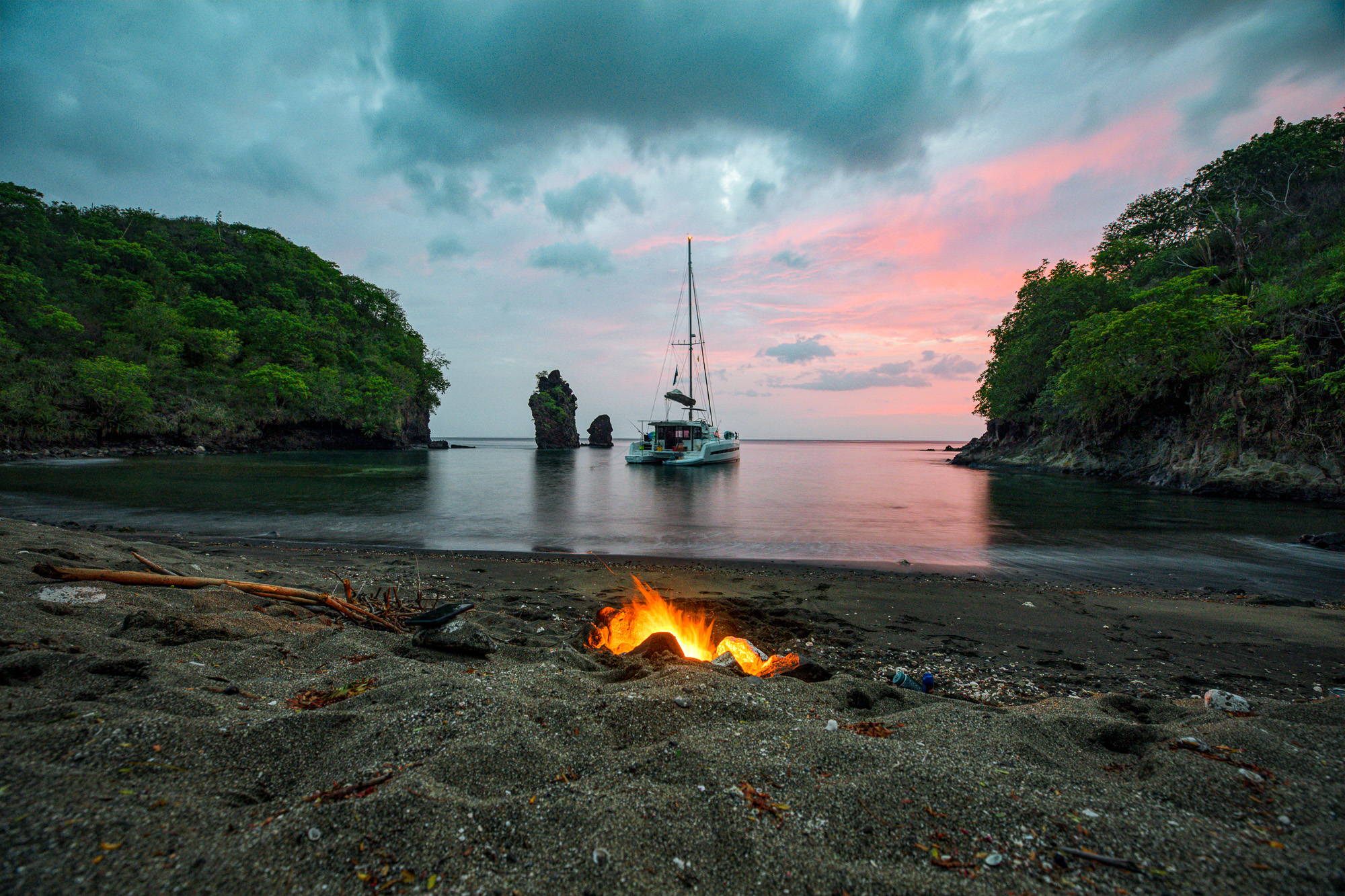
Friends visited the couple aboard SV Karma during their rookie sailing days for a “leisurely hop” between the Caribbean islands of Saint Lucia and Saint Vincent. A perfectly formed rainbow appeared on the boat’s starboard side as if on cue, framing a pod of jumping dolphins. “We’re like, welcome to our life,” Bryan jokes. “This is what it’s always like.” Meanwhile, as the group snapped photos and enjoyed the scenery, a massive squall brewed on the boat’s port side. “We had six to eight minutes to prepare for a torrential storm,” Bryan says. “It’s not like in a van or truck where, if it gets bad enough, you pull over and wait it out. This will literally tear the boat apart if you don’t take action.” Minutes later, the storm had passed, leaving minimal waves and frazzled nerves in its wake.
Jen says she’s learned so much in the past three years, including “things I didn’t know I even wanted to know.” Without mountains or buildings in the way, it’s possible to watch the sun rise, and the moon set simultaneously on the horizon. “It’s mind-blowing—and it does that every month,” she says. From sea state and routing to safety and weather, the Dangers have read every resource they could find. Much of the research leads back to the time before electronics, GPS, and satellites. “It’s fascinating how sailors used to read the stars to navigate.”

Perhaps the most transferable skill from their overlanding days is the ability to problem-solve. “I think we spent one, maybe two days in Mexico before [the VW bus] broke down, and we were stranded in the middle of nowhere,” Bryan says. “Jen pointed out that we had food, Karma’s dog food, and tequila, so we had time to figure out our options. I think that translates 100 percent.” These problem-solving skills come in handy when it comes to budget, which Bryan says is approximately equal to land-based travel. However, he adds, “The problem is the boat. We were shocked. Hauling the boat out of the water is no cheap feat, nor are parts or labor. The monthly budget looks pretty good, but it gets blown out of the water pretty quickly whenever we finally haul out to do the work.” Jen has one more joke to share. “What does ‘boat’ stand for?” She smiles. “Bust out another thousand.”
Drive Nacho Drive | Brad and Sheena van Orden
Photography courtesy of Drive Nacho Drive
Brad and Sheena van Orden were in the midst of house hunting, finally ready to settle down in the Ballard neighborhood of Seattle, when Brad serendipitously stopped by the local marina one day with their young son Remy. Through the pouring rain, he saw a boat. “You have to check this out,” he told Sheena over the phone. The seaworthy vessel triggered feelings of nostalgia from their days traveling the world in their 1984 VW van, “Nacho.” They could head out with their kids without the stress of packing up a vehicle; plus, there were so many islands to explore nearby. “We were trying to settle a bit and get back into the workforce,” Sheena says. “But for anyone who has traveled overland, you have to find a way to keep it in your life.”

The van Ordens chose a boat decorated with an illustrious past. Named “The Impossible,” the Roberts 53G was previously owned by mountaineer Jim Whittaker, the first American to summit Mount Everest. Jim’s lengthy CV includes pursuits such as being the first full-time employee of Recreational Equipment Inc. and guiding Robert F. Kennedy to the Mount Kennedy summit in 1965. When Whittaker retired from mountaineering, he and his family moved aboard The Impossible and sailed across the Pacific to Australia before returning to Seattle four years later. The boat takes its name after the yacht in René Daumal’s novel, Mount Analogue, read by Whittaker as he waited out a storm on K2.
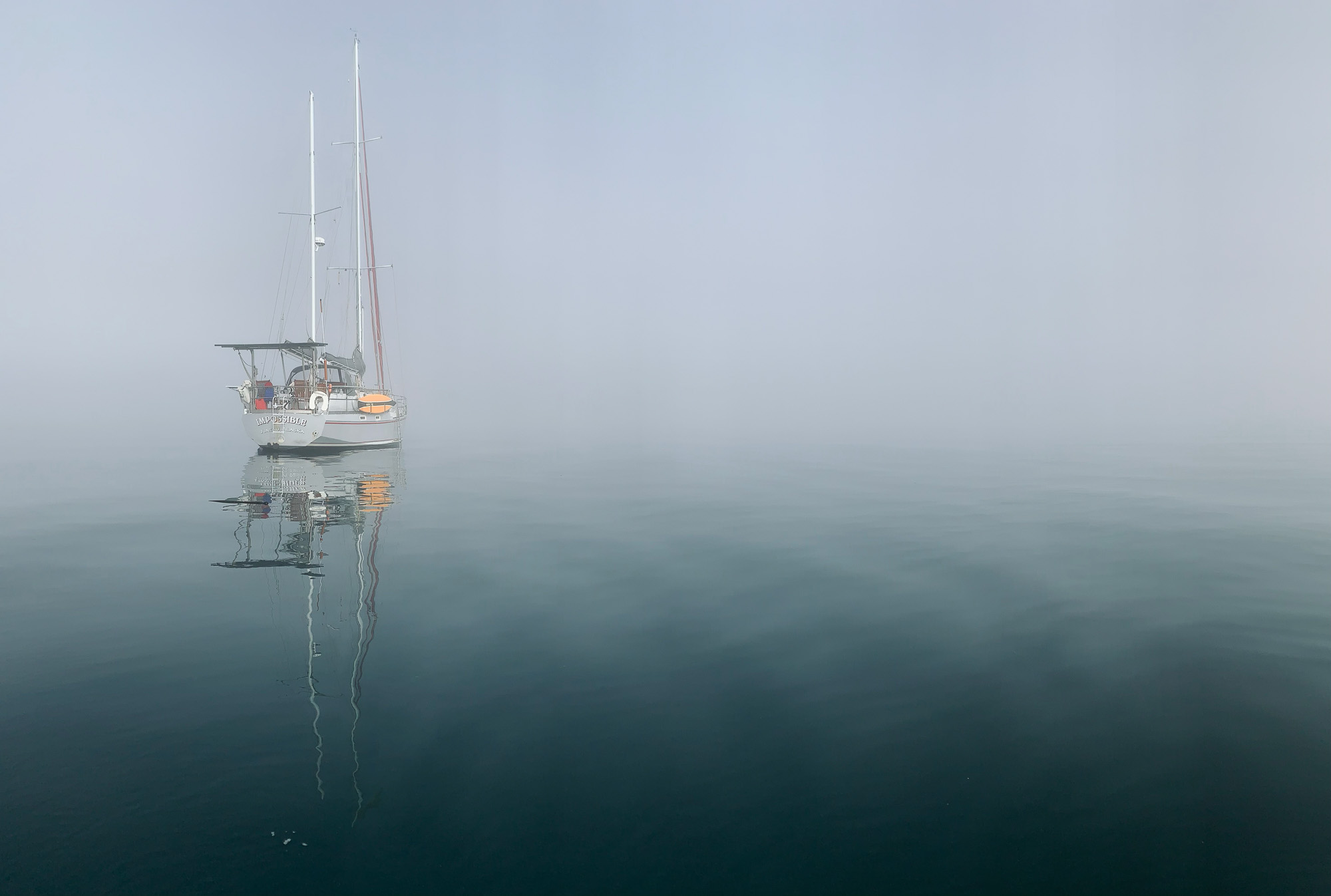
Brad and Sheena met the Whittaker family at the Return to Mount Kennedy premiere in Seattle. “We always wondered why there’s an industrial stove in the boat,” Sheena says. “Diane [Roberts, matriarch of the Whittaker clan] told us she agreed to sail around the world, but only if she could have a real kitchen.” Other quirks include the boat’s spinnaker, which features a colossal, 600-square-foot Windows 95 logo that was a gift to Whittaker from his good friend Bill Gates.
The Impossible is currently docked near Ballard at a marina with the biggest liveaboard community on the West Coast. Brad says it takes a certain type of person to live on a boat, so folks tend to have much in common there. “You can’t get to your boat without running into five people you know. Whether they’re retired or have families, you meet all sorts of different [folks] at the marina. It’s like overlanding in that you’re surrounded by a lot of people with similar interests. We missed having that sense of community.”
With community, however, comes advice—good and bad. “When we bought The Impossible, we’d never been on a sailboat before,” Brad says. “We told the previous owner—a ship captain—and he was very nice about it. But he’s kind of a salty guy and said, ‘Never let anybody know this is your first boat.’ People get upset when they see you went to a big boat without any prior experience.” Sheena laughs, “Make sure you use the right boating terms—don’t you dare call the head the bathroom!” The captain did provide sage advice, however, when he told us “‘The boat you’re buying is an expedition blue water boat; no matter what situation you get yourself into, for the most part, you’re going to break before the boat breaks.’”

Sometime within their first year of boat ownership, the van Ordens were returning from a cruise to the San Juan Islands, an archipelago in northwest Washington State. The boat’s transmission failed during a gale in the middle of the Strait of Juan de Fuca. As threatening waves smashed against the boat, the mast started tipping toward the water. Remy was one year old at the time, Brad says. It was terrifying. “Everything came out of the cabinets and smashed on the ground; there was broken glass everywhere. We basically dropped our anchor in the middle of the strait and tried to figure out what to do.”
During Brad and Sheena’s round-the-world drive, Nacho stopped running constantly. When the bus’s transmission failed in Colombia, the pair became so fed up that they would open the door, walk away, recover, and, when they were ready, return to the van. Brad remembers laying like a starfish in the pilot berth during the Juan de Fuca incident, thinking, I would give anything to walk away from this right now. “I didn’t know if we were going to die, if the boat was going to sink, or if we were going to get washed into the rocks on Whidbey Island,” he admits. Sometimes, when it goes wrong, there’s nothing you can do but call the Coast Guard.
“Any time we’ve done something big in life, it has really reset things,” Sheena admits. “It’s almost guaranteed that you’ll get great results out of it, or if anything, it was an experience you wouldn’t have had otherwise.” With two young boys in school and a busy work schedule, there’s currently only enough time for weekend cruises. That might soon change, however. “It’s been nearly 10 years since our big overlanding trip,” Sheena says. “We’re planning something big for the very near future.”

Our No Compromise Clause: We carefully screen all contributors to ensure they are independent and impartial. We never have and never will accept advertorial, and we do not allow advertising to influence our product or destination reviews.


